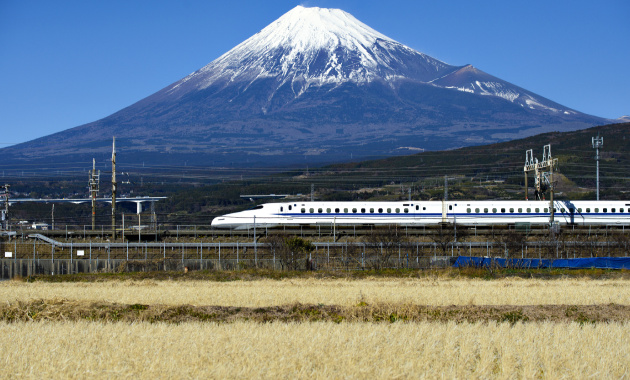Japan is endlessly fascinating, and amusingly bizarre. With all the weird quirks, the latest crazes and its uniqueness, Japan quickly became our favorite country in the world.
After stepping foot in Japan, we quickly realized that there are many rules that both known and not as apparent as they could be. So we will share with you our top tips that will come in handy for anyone visiting for the first time.
It’s Safe
One of the best things about Japan is that it is safe and has very low crime rates. But even though theft isn’t common in Japanese culture, that doesn’t mean it can’t happen to you. As with any destination, you’ll need to be vigilant as a foreigner, and always be aware of your surroundings and use common sense.
Cash Society
Japan is a very cash-oriented society. Despite the fact that things are changing, it may surprise you to learn that an incredibly modern country like Japan is in some ways quite old fashioned when it comes to money.
Not only is the use of cash extremely prevalent, but in many places credit cards are simply not accepted. And if you take trips outside the city, no matter what metallic element you have embedded in your credit card, it will be treated as the piece of plastic that it is.
We highly recommend obtaining some local Japanese yen from your local bank before leaving for Japan. If you find yourself without cash, head to a 7-Eleven and use the ATM. Not only is your bank card guaranteed to work every time, but it’s also open 24/7.

Japan Rail Pass
One of the most expensive parts about travel in Japan is the transportation. That said, you get what you pay for. The trains and metros in Japan are some of the cleanest and most efficient in the world.
The best way to save money on trains is to buy the Japan Rail Pass (also commonly called JR Pass). It is only available to non-Japanese people staying in Japan for a short time for tourism purposes. It is a very cost-effective rail pass for long distance train travel in Japan, especially if you are planning to travel around a particular region or the whole country. This will give you access to the bullet train (Shinkansen) and JR-branded commuter trains, buses, and ferries, often for about the same price as two individual train tickets.
The pass comes in two types: ordinary and green car. The latter is valid on green cars (first class cars) that offer more spacious seats than ordinary cars. Keep in mind that passes are valid for a certain number of days within a 7, 14, or 21-day period and cannot be used on the Nozomi trains.
JR passes should also be bought before you arrive in Japan, though you’ll still have to validate them at a JR office with your passport and voucher in-hand, before you can use them.

The Metro is Not 24 Hours
It may seem shocking that a country filled with so many conveniences doesn’t have a 24-hour train system, but it’s true — even in the glittering, well-oiled Tokyo. When planning your night out, expect to make a mad dash for the last train. Depending on where you are, you’ll have to be through the doors anywhere between 11:30 p.m. to 1:00 a.m. Missing the train can be an expensive mistake, leaving you to rely on a pricey cab. Be sure to have your hotel or destination address clearly printed or written before you go out.
Language
We always recommend learning a few basic phrases in the local language whenever you travel, but this is especially important in Japan where etiquette is held in the highest esteem. Make sure you are familiar with how to say “thank you,” “please,” and “excuse me.” Most Japanese speak limited English, however, don’t be fooled by Japanese modesty either—as long as somebody doesn’t say “iie” AKA “no,” they speak well enough. There are also places where people are more likely to be good English speakers—train stations, airports, and major tourist attractions especially. Try to save your questions for those places.
Foreigners aren’t Always Welcome
As friendly and helpful as the Japanese are towards foreigners, there are still unfortunately incidences where you’ll find you won’t be welcomed. Most of these are small, exclusive venues: whiskey bars in Shinjuku, or certain high-end restaurants in Ginza. This isn’t something that’s widespread, but it exists.

You Can Buy Almost Anything From a Vending Machine
Japan has the highest density of vending machines worldwide, they are everywhere! The machines sell any number of types of soft drinks, coffee, tea, cigarettes, candy, soup, hot food, and even sake and beer. You can get all of those things, and many more weird and wonderful items, from Japanese vending machines.
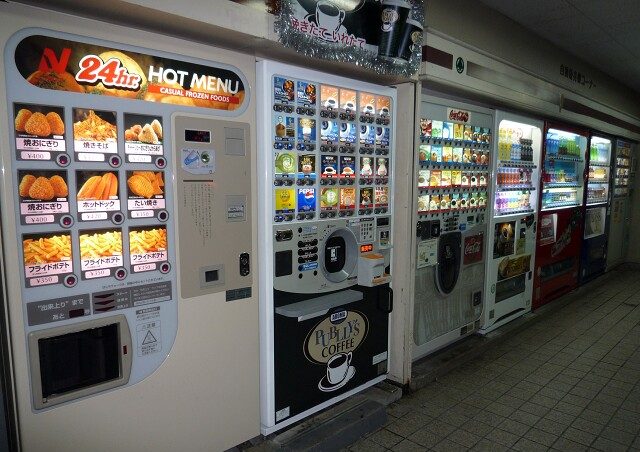
Manners and Customs in Japan
When traveling in a country other than your own, it is always a good idea to do a little research on what is polite so that you don’t accidentally offend people.
Here are couple manners to keep in mind when traveling to Japan:
- Eating while you walk is considered sloppy. Instead, find a place to sit and enjoy your snack.
- Pointing is considered rude. Instead, use an open hand to make gestures.
- Blowing your nose in public can be considered rude. Japanese people often go into the bathroom to blow a stuffy nose.
- On a crowded subway or train, it is polite to take off your backpack and hold it in your hands.
- Slurping noodles not only cools them down as you eat, but it indicates that the meal is delicious. So slurp away, it’s the polite thing to do!
- Taking off your shoes is common courtesy before entering many places. If the floor is raised at the doorway, it is an indicator that you should remove your shoes.
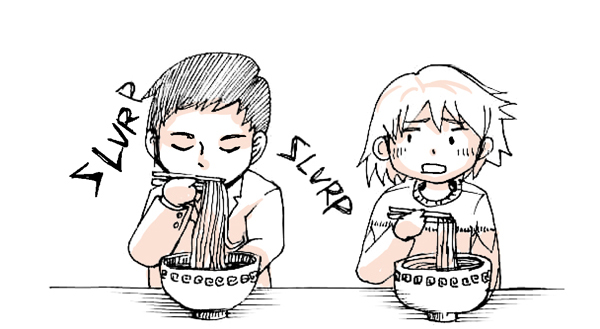
Dining Etiquette
In the more traditional washoku restaurants, you will need to take off your shoes and place them in a locker near the entrance. This helps keep the place clean. The establishment may also have low tables, and instead of chairs the seating will consist of cushions placed on the tatami straw mat flooring. Unless you are used to this it could be an awkward seating position and not all places have Western tables and chairs as an alternative. Once at your table, you will be served a wet hand cloth, o-shibori, which is traditionally delivered while hot.

Before starting a meal, Japanese say itadakimasu, which conveys your appreciation for receiving the food, and at the end it’s polite to say to the cook, waiting staff and the person who paid for the meal: gochiso sama deshita, which translates as ‘it was a real feast’. To convey your appreciation to the person who brought you to the restaurant or the staff, you may exclaim oishii to let them know you thought the food was tasty. During a toast, the common cry is kanpai, which means ‘dry glass’ – in other words, ‘bottoms up’. You can ask for the bill by crossing your forefingers into an X.
There is No Culture of Tipping
In Japan tips are not expected, and can even be considered rude, because the Japanese believe good service should come as standard.
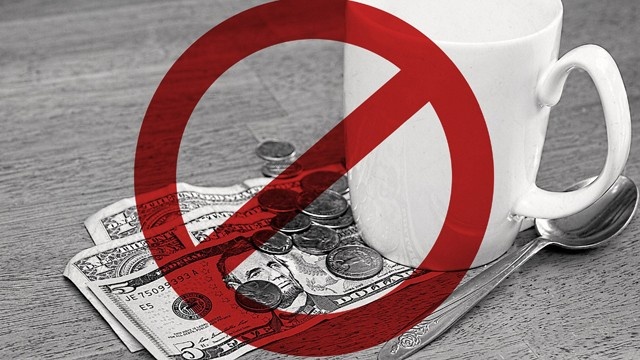
Chopsticks Manners
Most meals are eaten with chopsticks, while western cutlery is often available when needed, but you can score an easy compliment if you have proficient chopstick ability. Chopsticks come in wooden, metal and plastic varieties and should never be used to stab food, point to someone, tap the edge of your bowl (a sign of beggary), and they should not be stuck vertically in sticky rice. The latter symbolizes the feeding of the dead. In addition, winnowing wood splinters off of a disposable chopstick is considered to be rude.
If you find eating rice with chopsticks tricky, fear not. Oftentimes, people will hold the bowl in their hands as they scoop the rice to make sure it does not drop. Placing chopsticks across your bowl means that you’re finished. If that’s not the case, put them to the right or below your dish, making sure that the tips don’t touch the table (there is usually a rest for the sticks, or you can craft one from chopstick wrapping paper).
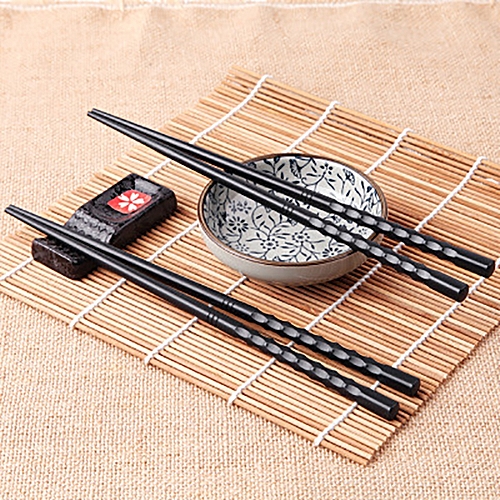
Internet Access
Free public Wi-Fi isn’t common in Japan. Consider renting a pocket Wi-Fi device. This allows you to bring a hotspot with you wherever you go so you can search for directions, get train schedules or look up restaurants in the area. However, most hotels or hostels and some coffee shops and restaurant have free Wi-Fi.
Helpful (Free!) Apps for Travel in Japan
- Google Navigation: Can give you the best routes for the metro and trains and even has live updates on delays.
- Navitime: The go-to train scheduling app/website in Japan. Not only does it have a Japan Rail Pass option, but it can similarly handle several other rail passes. It also allows to exclude results by train category and other means of transport.
- Google Translate: This is a go-to app for us while traveling in Asia because you can take a photograph of the characters on a menu or label and it will translate for you. Be warned that some things don’t quite translate into English all that well.
- GuruNavi Restaurant Guide: This app is easy to use and will point you in the direction of hole-in-the-wall places where locals eat instead of the typical tourist haunts.
- Japan Travel Guide With Me: This app has all sorts of useful information for your travels in Japan, and the best part is it can be used offline.
Sanitation
Public garbage bins are incredibly rare. Be sure to stash a baggie in your bag to hold onto garbage until you find one. Also keep a few extra tissues in your bag too for non-Western-style toilets.
Good to Know: Download a QR code reader before you go. Many shops use them to access free Wi-Fi, and they are generally a very popular way to get info.

